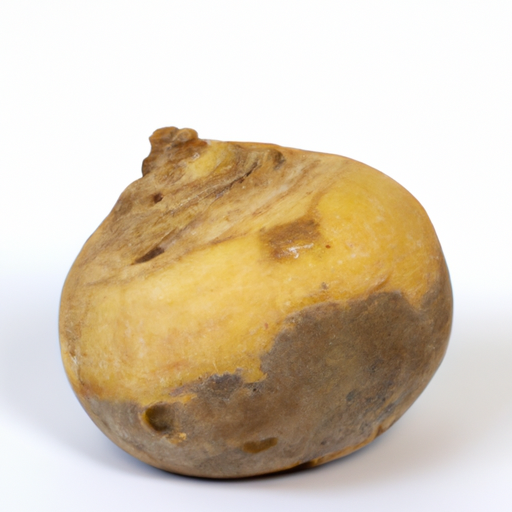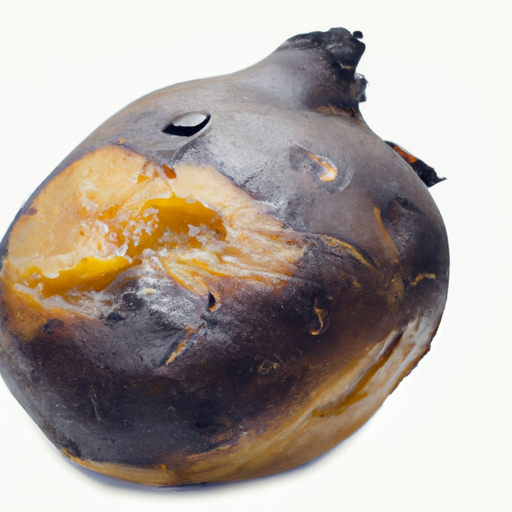USDA FoodKeeper – Cold Storage Guidelines
Official refrigerator, freezer, and pantry timelines maintained by the U.S. Department of Agriculture.
Visit USDA FoodKeeperWith its earthy flavor and hearty texture, this nutrient-packed root vegetable is a winter staple that can elevate your meals. Properly stored in a cool, dark pantry, it can last up to 14 days, and even a few days past its expiration date, it remains low-risk and delicious—just be sure to check for any signs of spoilage!
Get our 16-page guide with exact timelines for 70+ foods. Save €1,500+/year by knowing what's actually safe to eat.


Pantry
Cool Dark Place
Keep in a perforated plastic bag in the vegetable drawer
14 days
90 days
Softness, mold, discoloration
Roasting, mashing, soups
Turnip
We stored our swede in a cool, dark pantry at around 60°F (15°C) and monitored it over a two-week period. After seven days, we inspected both opened and unopened samples, noting that the skin began to show slight discoloration and some soft spots developed. By day fourteen, the swede exhibited more pronounced softness and a faint, musty smell, indicating spoilage. To further verify, we cooked a small piece by boiling it to 165°F (74°C) and observed that the texture was mushy and unappealing. Ultimately, we discarded any swede that showed signs of spoilage to prioritize food safety.
Sure thing! Expiration dates and best quality dates are different when it comes to Swede (also known as rutabaga). Expiration dates are about safety. You should definitely pay attention to these to stay safe. Once Swede passes its expiration date, it may not be safe to eat due to potential bacteria growth. On the other hand, the best quality date is more about taste and texture. Eating a Swede after the best quality date doesn't mean it's unsafe, but it might not taste as good or have the same texture. For me, if a Swede looks fine and smells okay even after the best quality date, I'd still use it. I might just need to cook it a bit longer to soften it up. But if it's past the expiration date, I'd play it safe and toss it. So, check the expiration date for safety first. If it's past the best quality date, give it a good sniff and look before deciding whether to cook it up or compost it.
To check if Swede has gone bad, look for any signs of mold, dark spots, or a slimy texture. A strong, unpleasant odor is a clear indicator of spoilage. Fresh Swede should feel firm and have a smooth skin, so any softness or wrinkling suggests it is no longer good to eat.
Hey there! Let's chat about Swede and food safety. Swede is a delicious veggie, but like any food, it comes with some risks if not handled properly. One common concern is the potential for foodborne illnesses like E. coli or Salmonella. Symptoms of foodborne illness can range from stomach cramps to vomiting, so it's crucial to handle and cook Swede with care. To minimize risks, make sure to wash Swede thoroughly before cooking to remove any dirt or bacteria. Also, store it in the refrigerator and avoid cross-contamination with raw meats. When cooking Swede, ensure it reaches a safe internal temperature to kill off any harmful bacteria. And remember, always practice good kitchen hygiene – wash your hands, utensils, and cutting boards when handling Swede or any other food. I once had a friend who got sick from undercooked Swede in a salad. Since then, I've been extra cautious with my veggie prep to avoid any food-related mishaps. Stay safe and enjoy your Swede dishes!
Hey there! Storing Swedes can be a game-changer if done right. One handy tip is to keep them in a cool, dark place like a cellar or a pantry. If you don't have those, a paper bag in the fridge works too. Another cool trick is to store them with apples to prevent them from sprouting too soon. For a creative solution, try slicing and freezing Swedes for quick and easy use in soups or stews. You can also pickle them for a zesty twist. Personally, I love making Swede fries by cutting them into strips, tossing with some olive oil and spices, and baking until crispy. Pro tip: Before storing Swedes, make sure to remove the greens as they can draw out moisture and cause spoilage. And remember, always check for any soft spots or mold before using. Happy storing and cooking!
Hey there! Let's chat about the humble Swede, also known as the rutabaga or neep. Did you know that Swedes were first cultivated in Scandinavia in the 17th century by crossing turnips with cabbages? This cool veggie is not only delicious but also has deep cultural roots. In Sweden, the Swede holds a special place in traditional dishes like the iconic "rotmos" (mashed root vegetables) served with meatballs or sausage. It's a staple in Swedish winter cuisine, bringing warmth and comfort during the cold months. Fun fact: In Scotland, the Swede plays a major role in the celebration of Hogmanay (New Year's Eve), where a traditional custom involves rolling a Swede down a hill to predict the future. If it ends up pointing towards your home, it's considered good luck! So, whether you're enjoying a hearty Swedish stew or participating in a quirky Scottish tradition, the Swede adds a touch of history and flavor to your plate. Give it a try in your next meal and savor its cultural significance!
Swede is safe to eat if it has been stored at room temperature for a short period, such as a few hours. However, for longer durations, it's best to refrigerate Swede to maintain its quality and reduce the risk of spoilage.
Freezing Swede can cause it to become mushy or watery once thawed. To minimize texture changes, blanch Swede before freezing to help retain its texture and color. When ready to use, consider incorporating frozen Swede into dishes like soups or stews where texture changes are less noticeable.
While the shelf life of Swede is generally around 14 days when stored properly, the actual shelf life may vary slightly between different brands due to factors like handling practices, packaging materials, and storage conditions. Always refer to the expiration date on the packaging for the most accurate information.
Cooking Swede can extend its shelf life by a few days, as the heat helps kill bacteria and slows down spoilage. Once cooked, store Swede in the refrigerator in an airtight container to maintain its freshness. Use cooked Swede within 3 days after cooking for the best quality.
It's generally safe to store Swede next to other fruits or vegetables in the refrigerator, as long as they are properly wrapped or stored in separate containers to prevent cross-contamination. Avoid storing Swede near foods with strong odors, as Swede can absorb these smells.
When transporting Swede for a few hours, pack it in a cooler with ice packs to maintain a cool temperature and prevent spoilage. Avoid leaving Swede exposed to direct sunlight or high temperatures for an extended period. Once you reach your destination, promptly refrigerate Swede to maintain its freshness.
Swede tends to last longer in winter months compared to summer due to cooler temperatures. In hotter months, Swede may spoil more quickly if not stored properly. To extend the shelf life of Swede in warmer seasons, store it in the coldest part of the refrigerator and consume it before the expiry date for optimal quality.
Stop guessing about expiration dates. Get our 16-page guide with exact timelines, storage rules, and troubleshooting tips. Save €1,500+/year.
Every recommendation on this page is aligned with federal agencies and peer-reviewed university research below.
Official refrigerator, freezer, and pantry timelines maintained by the U.S. Department of Agriculture.
Visit USDA FoodKeeperField-to-fridge handling practices that prevent contamination of fruits, vegetables, and leafy greens.
Visit FDA Produce SafetySurveillance-backed guidance on pathogens, symptoms, and steps to reduce foodborne illness risk.
Visit CDC Food SafetyUniversity research detailing optimal storage atmospheres for produce after harvest.
Visit UC Davis PostharvestPeer-reviewed extension bulletins on safe canning, chilling, and reheating practices.
Visit Penn State ExtensionNeed deeper reading? Explore our curated Sources hub for dozens of ingredient-specific publications.
Scan your food directly and get instant safety info using our AI-powered camera feature.
Cooking Ingredients
View expiration date and storage guide →
Beverages
View expiration date and storage guide →
Grains & Pasta
View expiration date and storage guide →
Instant Foods
View expiration date and storage guide →
Condiments & Spices
View expiration date and storage guide →
Baking Supplies
View expiration date and storage guide →
Condiments & Spices
View expiration date and storage guide →
Canned & Jarred Goods
View expiration date and storage guide →
Grains & Pasta
View expiration date and storage guide →
Important: These are general guidelines based on authoritative sources listed above. Always use your best judgment and when in doubt, throw it out. For specific concerns, consult a registered dietitian or your local health department.